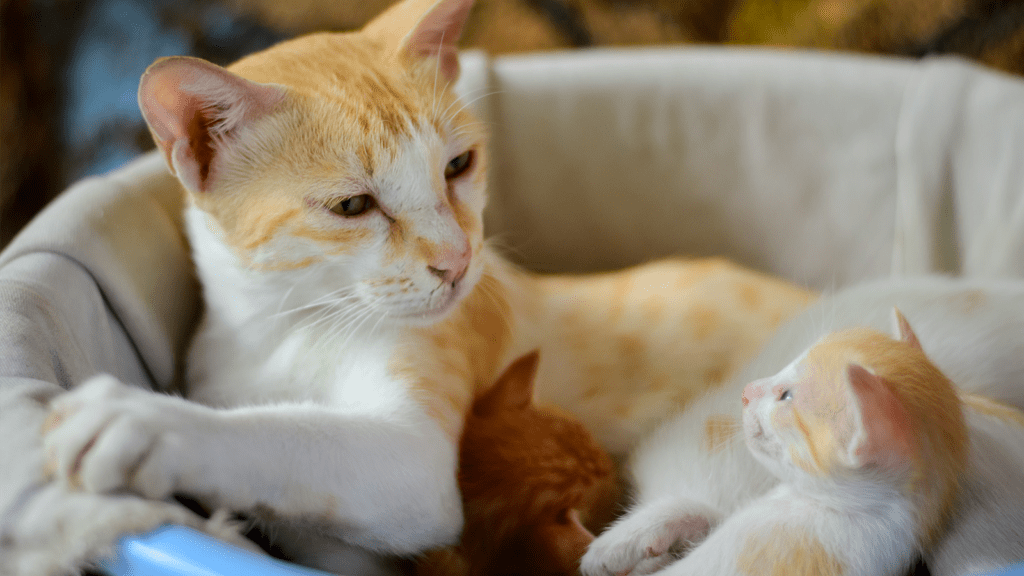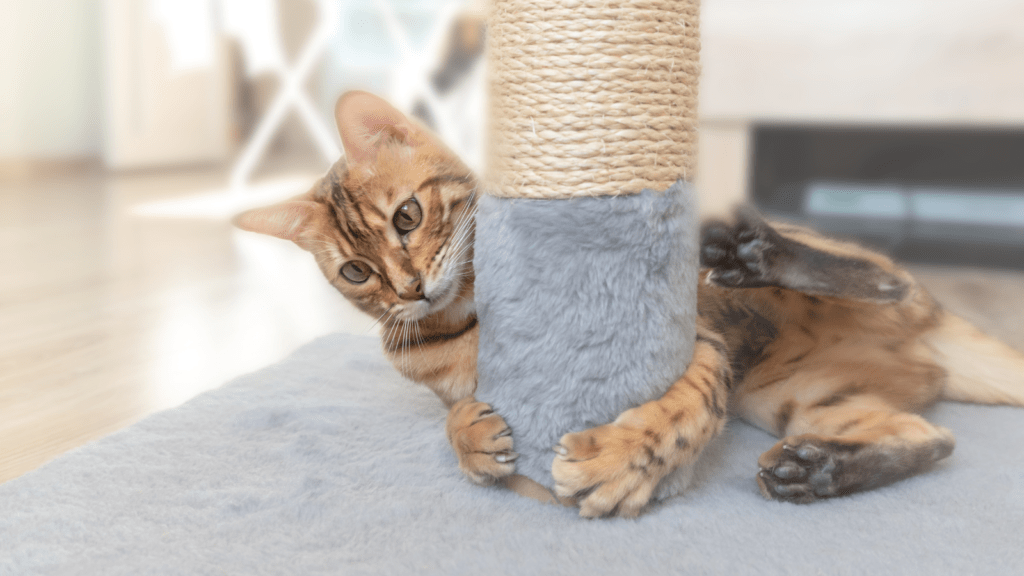
How to Create a Cat Foster Room
Is the idea of fostering a cat tickling your feline fancy? Whether you’re a seasoned cat whisperer or a first-time foster parent, creating the perfect foster space for your new furry friend is essential. In this guide, we’ll walk you step-by-step on how to create a cat foster room that is both practical, modern, and inviting.
Selecting the Ideal Space for Your Foster Cat
Factors like size, flooring, and location within your home all play a part in creating the perfect room. A dedicated room, such as a spare room, laundry room, or large bathroom, is ideal for fostering kittens or integrating adult cats.
Not only does a separate space allow your new foster cat to settle in comfortably, but it also helps keep them confined to one area, which is highly beneficial, especially for your first foster cat. This allows them to feel secure while they build the confidence to explore further. It’s also important to separate cats initially to prevent the spread of any contagious illnesses or parasites like fleas.
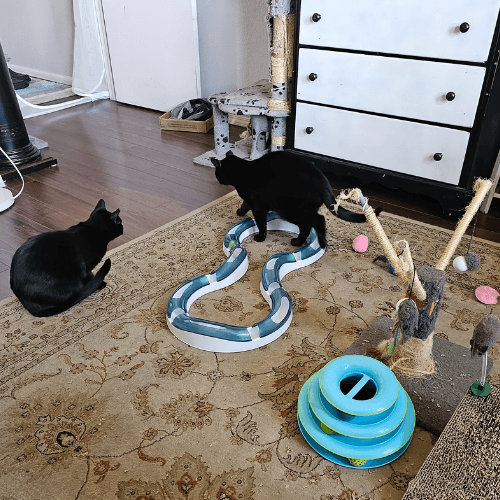
Remember to consider non-carpeted options, such as a kitten playpen or a small non-carpeted guest room, for easier clean-up instead of using the entire room or a spare room.
Preparing and Kitten-Proofing the Room
After selecting the perfect room for your foster cat, the next step involves ensuring its safety and comfort. Start by hiding electrical cords, removing small items, and clearing out any heavy or sharp objects.
A successful fostering experience relies on understanding cat behavior, as it helps strengthen the bond between the foster cat, other pets, and the household. Creating a safe and welcoming home base sets the stage for your foster cat to thrive!
Essential Items for Your Foster Cat’s Comfort
A few essential items like a litter box, soft bedding, and food and water stations are necessary for a content foster cat.
Litter Box Setup
A litter box should be large enough for your foster cat to move around comfortably. Setting up litter boxes for your foster cat involves the following considerations:
- The number of cats: Provide one litter box per cat, plus an extra one if possible. If you have four cats, you should have five or six litter boxes throughout the space.
- Preferences for open or enclosed boxes: Some cats prefer privacy, while others prefer open spaces. Experts will say that most cats prefer uncovered litter boxes. Here are our favorite litter boxes.
- Placement: Place the litter box in an easily accessible spot, no further than 10 feet from their bed, food, or other essentials. It’s also important to consider your litter scoop and cleaning supply station. I use a five-gallon airtight bucket that allows me to keep the bag of dirty litter and scoop in one place.
- Litter choice: Natural litter is the perfect choice for kittens, as it is gentle on their sensitive paws. We prefer Swheat Scoop and Oko Cat which are all natural and low dust.
By considering these factors, you can create a comfortable and suitable litter box setup for your foster cat or kitten room.
If your foster cat seems hesitant to use the litter box, try changing the litter type, size of the box, or even its location. Also, monitor the cat for any signs of pain or straining, as this might indicate a medical issue that requires attention from the fostering organization.
Remember to be patient. Many cats and kittens from the streets might be learning to use a litter box for the first time!
Food and Water Stations
We prefer stainless steel or ceramic bowls, which are easy to clean and maintain. Place the food and water bowls separately from the litter boxes to maintain cleanliness and prevent contamination.
Try an electric water fountain or food dish maze toy to encourage your baby to explore nutrition and reward good behavior.
Bedding and Relaxation Spaces
A comfortable and cozy bed is a must for your foster cat’s relaxation and sleep. Offer various bedding options, such as fleece blankets, thick towels, and cat beds, placed in different locations and heights to suit their preferences. A warm and quiet indoor space, like a separate room or a crate, can create a soothing environment for your foster cat to relax and feel safe.
Adding window perches, enclosed beds, and multi-purpose furniture will enhance your foster cat’s relaxation spaces. More tips to reduce stress include cardboard boxes, hiding places, and heat sources like sunshine or a heating blanket.
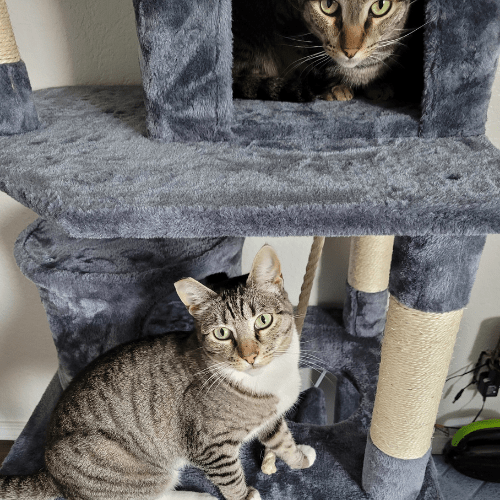
Enrichment and Playtime Essentials
Interactive toys, scratching posts, and climbing stations all contribute to their happiness and fulfillment. Provide interactive and independent play toys to accommodate their varying energy levels and interests.
Cats love toys filled with catnip, feather wands, and laser toys, which can keep them entertained for hours. Scratching posts made from cardboard, old carpet pieces, or sisal material offer a variety of textures for your foster cat to scratch and climb, further enhancing their playtime experience.
Having a good scratching post or scratching boxes is helpful in keeping your cat’s nails trimmed and off your furniture. This can reduce the frequency that you need for nail clippers to trim your cat’s nails.
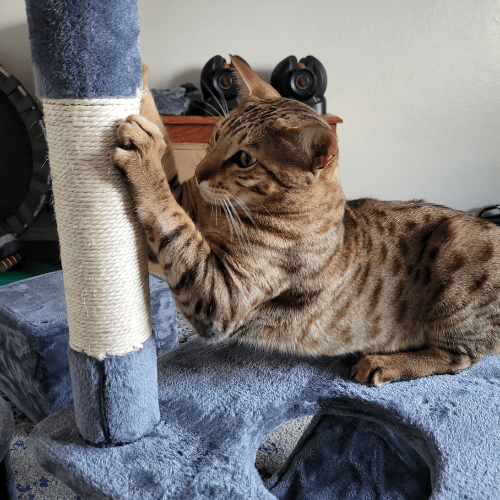
Introducing Cat-Safe Plants and Greenery
Adding cat-safe plants and greenery to the foster room creates a more natural and stimulating environment for your foster cat. Cat grass is a fantastic option, as it allows them to nibble and play, giving them a sense of the outdoors.
Other cat-safe plants, such as catnip, silver vine, and cat thyme, can also be introduced to the foster room. Place these plants in accessible areas, such as windowsills or shelves, ensuring they’re out of reach of your curious foster cat to prevent any accidental damage to the plants.
Creating a Safe Space for Interaction with Other Pets
It’s important to set up a separate and safe space for your foster cat to interact with other pets under controlled conditions. This not only helps your foster cat adjust to their new surroundings but also ensures the safety of your resident pets. Most cats should have a two-week quarantine as they are introduced to resident pets.
When your foster cat is ready to meet your other pets or children, make sure they’re in good health and have no contagious diseases. Supervise their interactions and gradually increase the time spent together, allowing them to form a bond in a safe and controlled environment.
Tips for Maintaining a Clean and Sanitary Foster Room
The health and well-being of your foster cat heavily rely on a clean and sanitary foster room. Here are some tips for maintaining a hygienic environment:
- Use easy-to-clean flooring, such as tile or laminate.
- Regularly wipe and disinfect surfaces.
- Change litter and bedding frequently.
- Wash or clean blankets, beds, and toys immediately when soiled.
Practicing good hygiene, such as washing your hands with soap and water, also helps protect you and your pets from any potential disease transmission. A clean and sanitary foster room will ensure a comfortable and healthy environment for your foster cat.
Monitoring Your Foster Cat’s Health and Well-Being
Monitoring your foster cat’s health and well-being is a key responsibility as a foster parent because many foster cats are rescues. Pay close attention to any changes in their behavior, appetite, or appearance, which could indicate potential medical issues. Learning about your foster cat’s unique behaviors and preferences can help you provide the best possible care during their stay with you.
Contact the fostering organization or your veterinarian for guidance if you notice your foster cat exhibiting signs of discomfort or unusual behavior. They can provide valuable advice and support, ensuring your foster cat remains healthy and happy throughout their time in your care.
Integrating Your Foster Cat into Your Home
The fostering process includes an important step of gradually integrating your foster cat into your home. Here are some tips to help with this process:
- Allow your foster cat to gradually explore different areas of your home.
- Introduce your foster cat to your resident pets slowly and always under supervision.
- To minimize stress, provide a safe and comfortable environment for both your foster cat and your resident pets during these interactions.
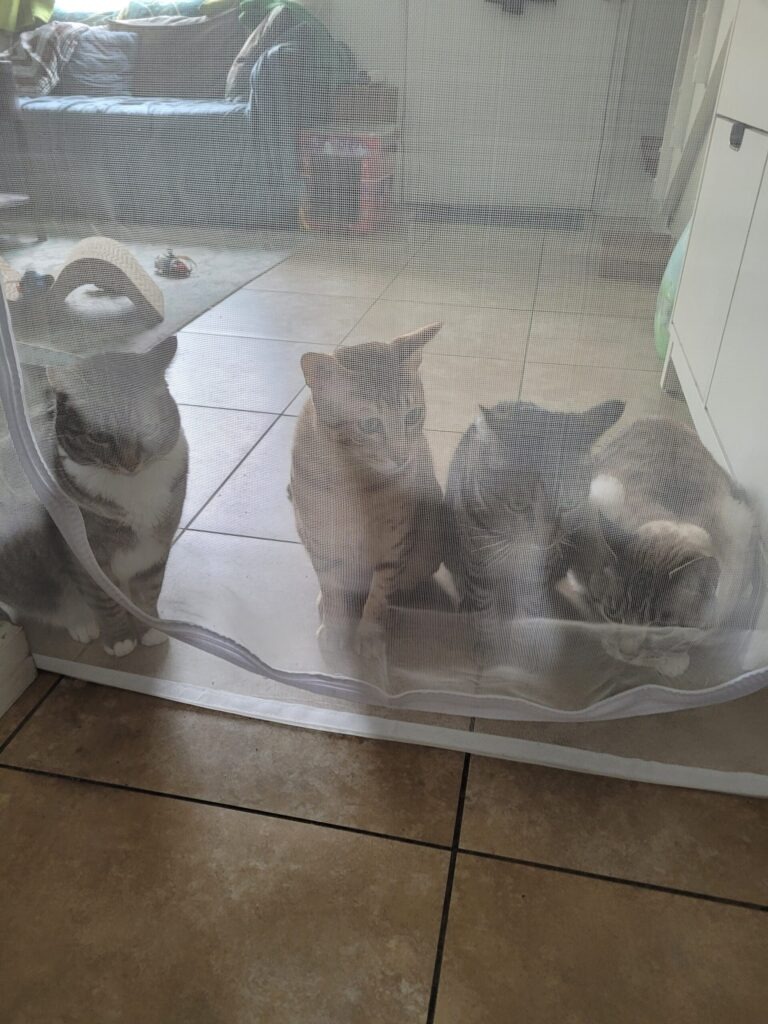
By following these steps, you can help your adult cat acclimate to their new surroundings as a foster kitty and ensure a smooth integration with your own pets, including any foster cats you may already have.
Remember, fostering a cat is a rewarding experience, but it also comes with challenges. Be patient and understanding as your foster cat adjusts to their new home. With time, love, and care, they’ll eventually settle in, and you’ll have played a crucial role in helping them transition to their forever home.
Conclusion
Setting up a cat foster room can be extremely fun, but it requires thoughtful planning and careful consideration. From selecting the ideal space to providing essential items, enrichment activities, and a safe environment, your dedication will undoubtedly make a significant difference in the life of a cat in need. As you embark on this rewarding journey, remember that your love and care will ultimately help your foster cat find their forever home, making every effort worthwhile.
Foster Room Frequently Asked Questions
What is the best enclosure for foster kittens?
Foster kittens will need a safe and secure space, such as a spare bedroom or office, playpen, hallway, small bin, or an incubator for neonates (visit Kitten Lady for neonatal kitten questions!). Also, creating an accessible enclosure is the best way to ensure that foster kittens get the love and care they need!
How do you prepare a room for a kitten?
To prepare a room for a kitten, make sure to cover wires and cords, remove any potential hazards or breakable objects, secure window screens, and store chemicals securely. Remove easy access to any small baby hazards.
Is it OK to put a kitten in a kennel?
It is OK to provide a kitten with a safe and comfortable environment, like a cage or kennel when bedtime comes. Make sure it’s the right type of cage and in a good location for the kitten to have a quiet night. Cages should be large enough for the kitten to move around, include a litter box, and have enough space to play.
What is the ideal space for foster kittens?
Having a spare room, laundry room, or bathroom is the ideal space for fostering kittens. Kittens love having their own room as it provides a safe and comfortable space for them to explore.
How can I kitten-proof the foster room?
By hiding electrical cords, removing small items, and clearing out heavy or sharp objects, you can easily kitten-proof the foster room for a safe environment. Remember to secure any hiding places, window screens, or possible escape routes, even if it’s a small space.

